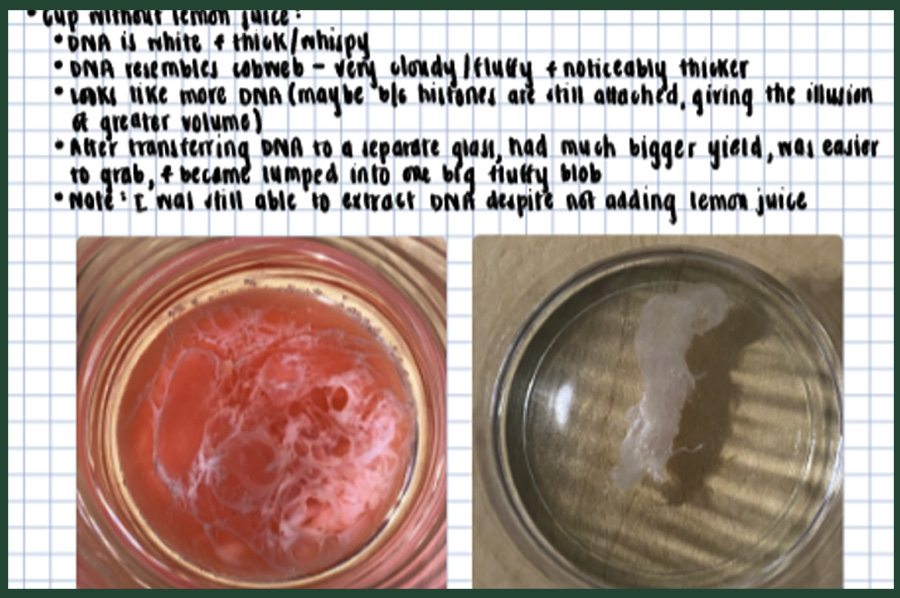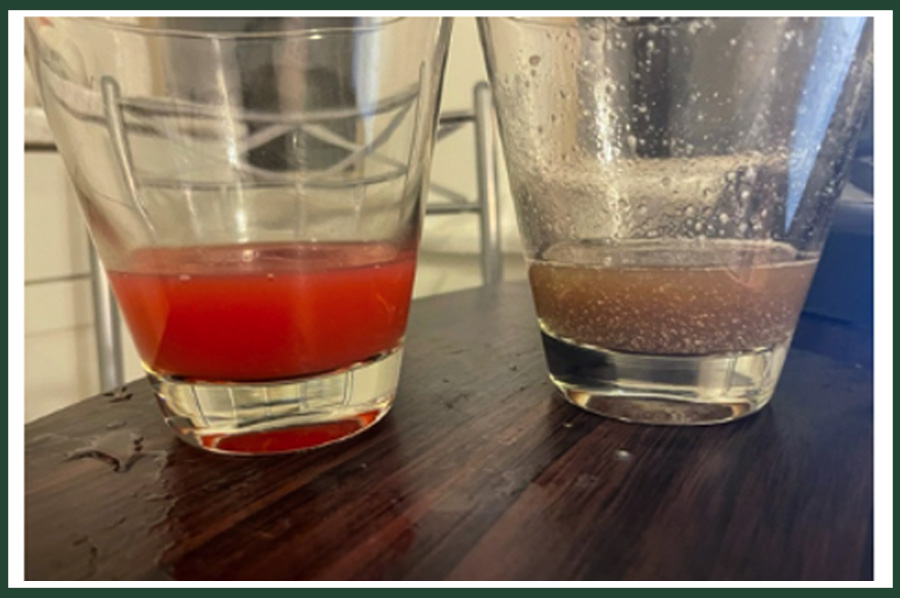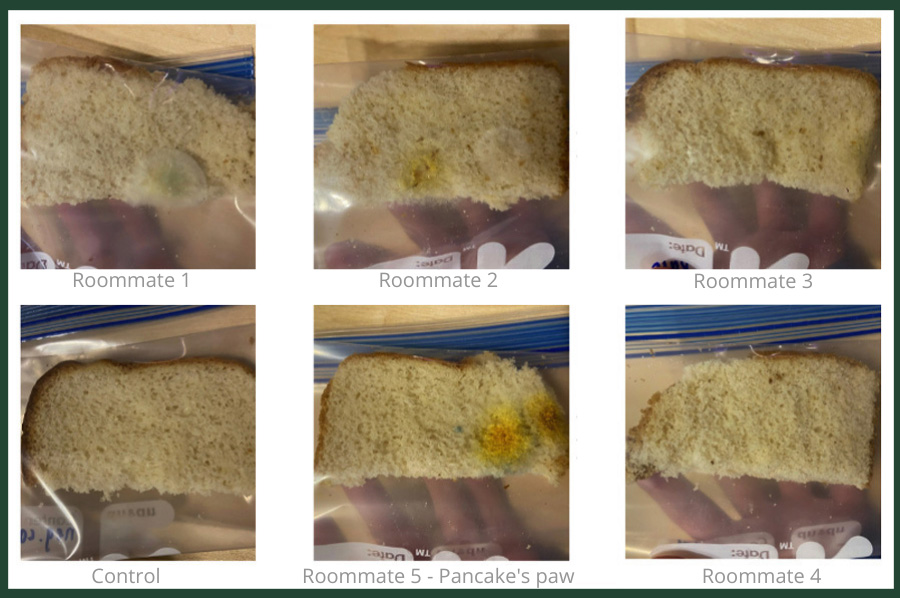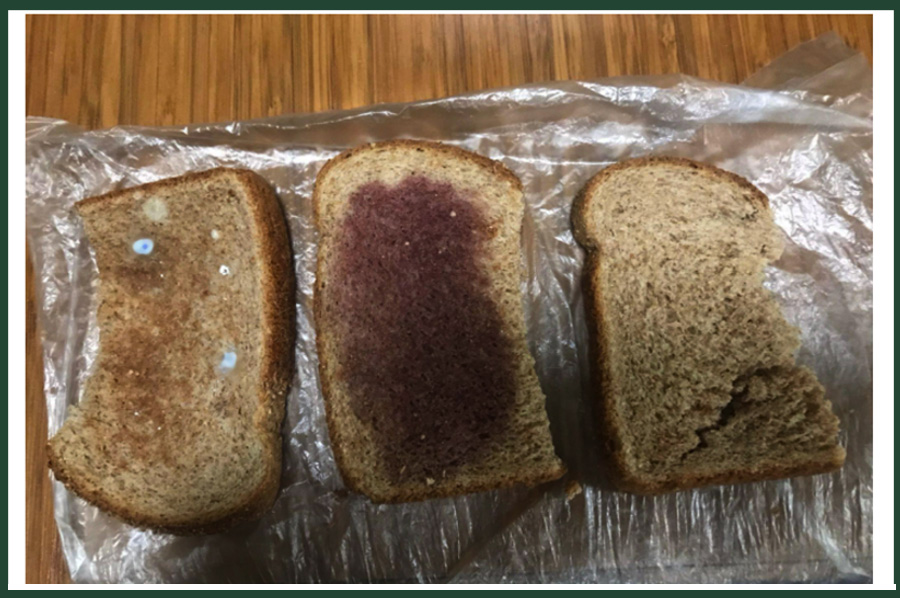Biology in Your Basement
Biological Sciences Special Faculty Creates New Remote Lab Course
By Emily Payne
Media Inquiries- Associate Dean for Communications, MCS
The central dogma of biology, says Special Faculty Lynley Doonan, is DNA makes RNA makes protein. Normally, students explore these fundamentals in her Modern Biology lab course. At the bench, students can learn how to extract small DNA molecules called plasmids from bacteria and analyze its concentration, quantity and purity on a DNA gel. And they can explore laboratory techniques like a western blot to learn how to detect specific proteins from among a mixture of proteins.
But in the midst of an ongoing pandemic and more online only classes, Doonan had to get a little more creative. This spring, Doonan offered the newly designed course Biology in Your Basement as a seven-week mini elective.
“Biology in Your Basement is all about experiments you can do at home using things you find in your house or grocery and drug stores,” said Doonan.
Doonan was inspired to develop the lab class after demonstrating how to extract DNA from strawberries for the Mellon College of Science’s Science at Home Instagram video series.
“I thought it was going to be difficult,” Doonan said of designing the course. “But once I did the DNA extraction video, I realized there are lots of things around the house that can illustrate the basic science principals of DNA, RNA and proteins without needing any lab equipment.”
“(Biology in Your Basement) illustrates that science is all around us.”
Another key ingredient, said Doonan, was identifying what skills a lab course teaches students that lectures and textbooks can’t. She sees lab classes as having two components: technical, hands-on skills and analytical skills. Remote instruction certainly hinders learning the technical skills of working at the lab bench and using specialized equipment. However, the at-home adaptations give students more time to cultivate other critical skills.
“We can devote more time to computational techniques as well as analysis and critical thinking skills,” said Doonan.
You don’t need a physical lab space to walk through concepts such as how to ask scientific questions, make a hypothesis, determine controls, take notes and analyze data — all necessary components of how to set up a good experiment.
Throughout the course, Doonan taught the theory behind the experiments as the students conducted them. She also collected data with the class over Zoom that students could analyze in case they were unable to do the experiments at home.
In addition to replicating the strawberry DNA extraction experiment, students will grow their own yeast from flour and water to make homemade bread. This experiment is a good introduction to model organisms — i.e., what is the best organism to use for the query you want to answer — and how to culture those organisms.
In another experiment, students will look at how an enzyme in pineapple can break down the proteins that hold gelatin together. The enzyme called bromelain is also used in meat tenderizer, which Doonan found had perfect potential for a student-designed experiment.
“One of my goals as an instructor is to make my students independent learners,” said Doonan. In the last two weeks of the course, students will be able to design a project to investigate their own question. One idea Doonan will propose to students is to make their own meat tenderizer.
All you need is water and something acidic such as vinegar, wine or citrus fruits, notes Doonan. Like bromelain, the enzymes in these acidic substances help to break down the fibrous proteins in meat.
“Students could compare oranges versus lemons as a better tenderizer or compare their homemade tenderizer versus using a mallet. The scientific questions they can ask are wide-ranging,” said Doonan.
Overall, despite the challenges developing a remote lab course posed, Doonan believes that Biology in Your Basement has another unique benefit: “It illustrates that science is all around us.”



